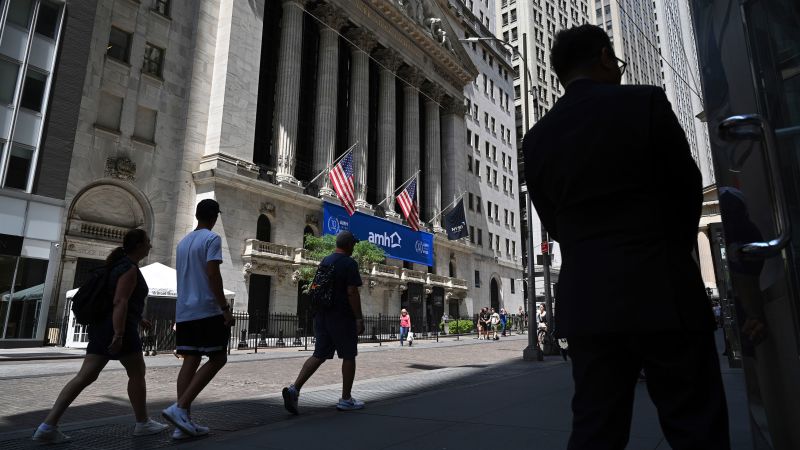A version of this story first appeared in CNN Business’ Before the Bell newsletter. Not a subscriber? You can sign up right here. You can listen to an audio version of the newsletter by clicking the same link.
Wall Street’s optimism has edged up in recent weeks after an August slump to levels not seen since the collapse of several regional banks earlier this year.
But investors aren’t letting their guard down just yet.
CNN’s Fear & Greed Index, which tracks seven different barometers for market sentiment, has oscillated between “neutral” and “greed” territory this month after plunging to a “fear” reading mid-August. But it’s still far from its “extreme greed” reading last reached in late July before August’s selloff, and is hovering around levels seen in late April, after the collapse of several US regional banks roiled markets.
“We are not out of the woods yet, and I believe some investors remain very cautious,” said Eric Sterner, chief investment officer at Apollon Wealth Management.
The broad-based S&P 500 index has roared 16% higher this year, propped up by Wall Street’s infatuation with artificial intelligence that’s driven a powerful rally in tech stocks.
Signs of persistent inflation and a still sizzling labor market in recent months have worried investors that the Federal Reserve has more room to raise interest rates, which could pinch the economy and financial markets. Stocks notched their second monthly decline this year in August and are negative for September.
While the Fed’s policy meeting is taking place next week, there’s a laundry list of factors stoking uncertainty in the market. Student loan repayments are set to restart next month, which could eat into the resilient consumer spending that has helped keep the economy strong through the Fed’s rate hikes.
Fears of a potential government shutdown and elevated yields keeping a lid on stocks are also points of concerns for stock investors, says Michael Arone, chief investment strategist at State Street Global Advisors.
“This is a seasonally difficult time for markets after what’s been a very sanguine start to the year,” said Arone.
September has historically been the worst month for stocks, and it could live up to its reputation this year. The S&P 500 has fallen about 0.9% in September, weighed down by a spike in oil prices and rising yields.
Bullish sentiment among individual investors, or the expectation that stock prices will climb over the next six months, rose to 42.2% last week, according to the latest American Association of Individual Investors Sentiment Survey. That marks the first time the measure has risen above its historical average in four weeks.
But some consider investor sentiment readings as contrarian indicators. Bearish sentiment touched a high of 70.3% in March 2009, right as the bear market at the time bottomed, according to AAII.
Normally a new, $2.5 billion factory, complete with 1,400 expected jobs, would be considered a good thing for a local economy.
But not the battery plant in Kokomo, Indiana, reports my colleague Chris Isidore.
“It’s a spit in the face,” said Gary Quirk, president of United Auto Workers Local 685.
That’s because the plant will make large batteries for electric vehicles. The plant is being built by a joint venture of Stellantis, the automaker that makes vehicles under the Jeep, Ram, Dodge and Chrysler brands; and Samsung. UAW Local 685 represents four factories that Stellantis already operates in the town: three that make transmissions, one that makes engines.
The concerns of Quirk and his fellow union members epitomize a larger struggle in the US auto industry: making electric vehicles simply requires less work. As automakers move to electric lineups, then, many of the well-paying union jobs making engines and other parts could disappear.
Read more here.
German shoemaker Birkenstock has filed for an initial public offering in New York, becoming the latest European company to choose the United States as the place to raise money on the stock market.
The iconic footwear brand said in a filing to the US Securities and Exchange Commission Tuesday that it planned to list on the New York Stock Exchange under the symbol “BIRK.” It didn’t disclose its target share price or the proposed date of the listing.
The Financial Times, citing unnamed sources familiar with the matter, reported Tuesday that Birkenstock was seeking a valuation of more than $8 billion.
In its filing, the company said revenue in the six months to the end of March had risen 19% from the same period in the 2021-22 financial year but that its net profit had fallen 45%. Birkenstock said inflationary pressures had pushed up the cost of labor and materials.
Read more here.
Read the full article here




